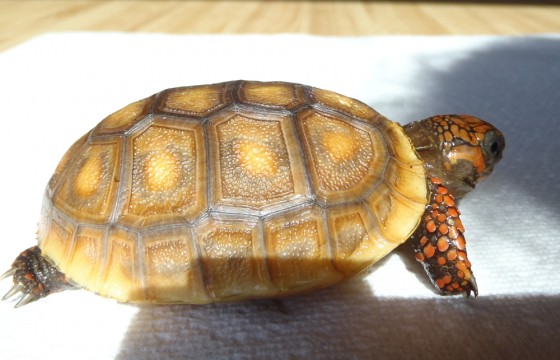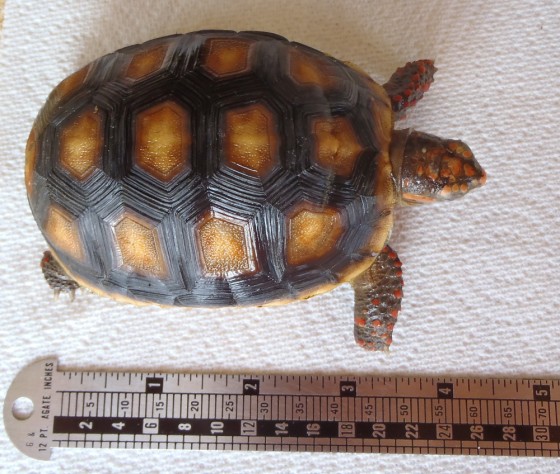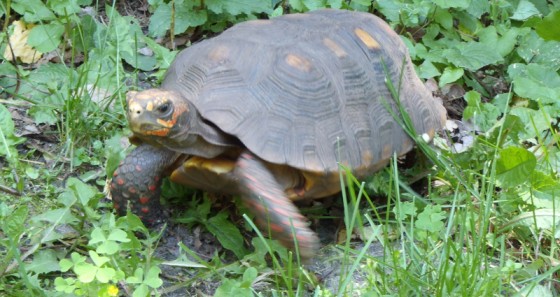The article excerpt and links below is to an article that gives examples of Redfoot Tortoise intelligence and presents a perfect example of why it’s important to have large, well planted indoor and outdoor enclosures for your tortoise and have it designed to not look like the pen of a Russian or Greek.
——————
For evidence of reptilian intelligence, one need look no further than the maze, a time-honored laboratory test. Anna Wilkinson, a comparative psychologist at the University of Lincoln in England, tested a female red-footed tortoise named Moses in the radial arm maze, which has eight spokes radiating out from a central platform. Moses’ task was to “solve” the maze as efficiently as possible: to snatch a piece of strawberry from the end of each arm without returning to one she had already visited.
“That requires quite a memory load because you have to remember where you’ve been,” Dr. Wilkinson said.
Moses managed admirably, performing significantly better than if she had been choosing arms at random. Further investigation revealed that she was not using smell to find the treats. Instead, she seemed to be using external landmarks to navigate, just as mammals do.
Things became even more interesting when Dr. Wilkinson hung a black curtain around the maze, depriving Moses of the rich environmental cues that had surrounded her. The tortoise adopted a new navigational strategy, exploring the maze systematically by entering whatever arm was directly adjacent to the one she had just left. This approach is “an enormously great” way of solving the task, Dr. Wilkinson said, and a strategy rarely seen in mammals….More at Coldblooded Does Not Mean Stupid – New York Times
———–
All tortoises possess a highly developed localized intelligence and problem solving capability which helps them survive in their respective natural environments.
Redfoot’s spend the bulk of their lifetime in dense tropical rainforests which present all kinds of difficulty in getting around and finding food. Without this problem solving capability and their highly developed sense of smell surviving in this type of environment would be next to impossible.
All of this is why you must provide your Redfoot tortoise with large and well planted indoor and outdoor enclosures where they can utilize these skills to forage for food and get enough exercise.
Tortoises are not a pet you can stick in a glass aquarium on a substrate of old newspaper feed commercial food look at them a couple of times a day and expect them to survive, let alone thrive.
They need a stimulating environment in order to act as their DNA has wired them to and it’s up to you to either do the research to determine whether you can provide the type of environment they need to survive and thrive.


